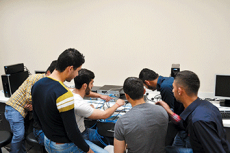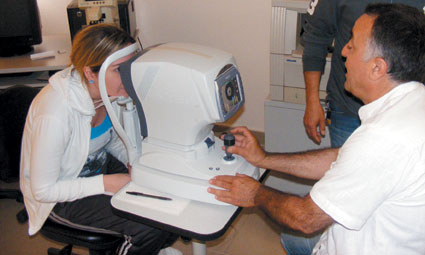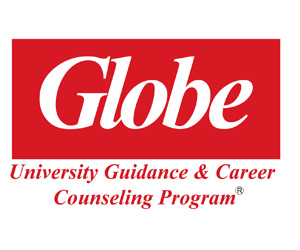Accreditations
Accreditation of Universities in the USA
By Ronald B. Standler
1. Introduction
The purpose of this essay is to explain accreditation to students in the USA, as well as to foreigners who are baffled at the complexity of accreditation in the USA. A secondary purpose is to explain the requirements for academic degrees in the USA.
2. Regional Accrediting Organizations
There are six regional accrediting organizations for universities in the USA, each with a different territory. These regional accrediting organizations accredit all degrees, in all subject areas, in an entire university. (See below for organizations that accredit degrees in a single academic subject.) The alphabetical list of states in parentheses comprise the region for each organization.
- Middle States (Delaware, the District of Columbia, Maryland, New Jersey, New York, and Pennsylvania)
- New England (Connecticut, Maine, Massachusetts, New Hampshire, Rhode Island, and Vermont)
- North Central (Arizona, Arkansas, Colorado, Illinois, Indiana, Iowa, Kansas, Michigan, Minnesota, Missouri, Nebraska, New Mexico, North Dakota, Ohio, Oklahoma, South Dakota, West Virginia, Wisconsin, and Wyoming)
- Northwest (Alaska, Idaho, Montana, Nevada, Oregon, Utah, and Washington state)
- Southern (Alabama, Florida, Georgia, Kentucky, Louisiana, Mississippi, North Carolina, South Carolina, Tennessee, Texas, and Virginia)
- Western (California and Hawaii)
The Council for Higher Education Accreditation (CHEA) is a private organization that coordinates the regional accrediting organizations, as well as the accrediting organizations in specific academic subjects.
The federal government in the USA plays a negligible roll in accreditation, mostly in The Office of Postsecondary Education of the U.S. Department of Education. The U.S. Department of Education has a database of nationally recognized accrediting agencies by subject area.
3. Accrediting Organizations in Specific Subjects
There are also accrediting organizations for academic degrees in some specific subject areas. For example:
- Chemistry
The American Chemical Society, Committee on Professional Training (ACS) - Computer Science
The Accreditation Board for Engineering & Technology, Computing Accreditation Commission (ABET-CAC). The Computing Sciences Accreditation Board (CSAB) participates in ABET. The CSAB includes representatives of the Association for Computing Machinery, the Computer Society of the Institute of Electrical and Electronic Engineers, and the Association for Information Systems. - Engineering & Technology
The Accreditation Board for Engineering & Technology (ABET) has representatives from all of the major engineering professional societies in the USA, including the Association of Mechanical Engineers (ASME), the Institute of Electrical and Electronic Engineers (IEEE), and the National Society of Professional Engineers (NSPE), amongst many others.
Degrees in engineering technology are often confused with degrees in engineering. The distinction between engineering and technology is:- Engineering students take more classes in mathematics and higher-level classes in physics and chemistry, than technology students. Technology students tend to have more "practical" classes, as in vocational education.
- Consequently, graduates of engineering programs are better qualified to do research and development, such as design novel products. Graduates of technology programs (e.g., a bachelor of science in electrical engineering technology) are generally employed to build prototype products, supervise manufacturing production work, do routine laboratory work, and repair sophisticated electronic equipment.
- Technology programs are not offered by most universities in the USA, so many students who choose to study engineering would be better suited for a technology program.
- Law
The American Bar Association (ABA) section on legal education and The Association of American Law Schools (AALS) both evaluate law schools. - Medicine
The Liaison Committee on Medical Education (LCME) is a joint project of
- The Association of American Medical Colleges (AAMC) and
- the American Medical Association, Council on Medical Education (AMA-CME)
Meteorology / Atmospheric Science
The American Meteorological Society (AMS) has issued a policy statement that describes the minimum curriculum and faculty for a bachelor's degree in meteorology. The AMS also certifies individual people as competent in meteorology.
Note that some of these standards are set by a nonprofit professional society that is concerned with the subject matter (e.g., ACS, ABA, AMS). Other standards are set by associations of medical schools or law schools.
There are many other examples of accreditation for a specific department, I list some of the above examples only because I am familiar with them from my background in science and engineering. Further, the examples in law and medicine are important because state governments require that a person who is licensed to practice law or medicine must have graduated from an accredited school, amongst other requirements.
4. Law
The accrediting organizations are all nonprofit corporations. Courts generally defer to any decision made by an accrediting organization, provided that:
- the organization followed its own rules.
- the act was in good faith.
- there exists a formal, internal procedure for protests of an impending act that adversely affects a party.
This legal principle was established in England in the case Dawkins v. Antrobus, 17 Ch. D. 615 (1881). There are several scholarly articles that explain the law in more detail:
- Zechariah Chafee, "The Internal Affairs of Associations Not for Profit", 43 Harvard Law Review 993 (1930).
- William A. Kaplin and J. Philip Hunter, Comment, "The Legal Status of the Educational Accrediting Agency: Problems in Judicial Supervision and Governmental Regulation," 52 Cornell Law Quarterly 104 (1966).
My essay on state action at private colleges has a section that cites cases nationwide that accrediting associations are not engaged in state action. I note that some courts have required that accrediting associations provide "common-law due process" to colleges or departments.
Minimum Requirements
Definitions
Before one can understand the requirements for academic degrees, one first must understand some terms about academic credit for a class:
semester
A semester is an academic term with a duration of 15 weeks. Typically in the USA, a university has two semesters per year: one begins in August and the other begins in January. (There is a third semester during the summer, but most students have jobs during the summer, instead of attending classes then.)
semester hour
A so-called "one-hour" lecture class has a duration of 50 minutes. A lecture class that meets for a total of 3×50 minutes each week for one semester is worth "3 semester hours" of credit. A lecture class that meets for a total of 5×50 minutes each week for one semester is worth "5 semester hours" of credit.
quarter
A quarter is an academic term with a duration of 10 weeks. A typical student attends classes for three quarters during the year. (There is a fourth quarter during the summer, but most students have jobs during the summer.) Some universities in the USA have quarters, instead of semesters.
quarter hour
A class that is worth 3 quarter hours of credit is equivalent to a class that is worth 2 semester hours of credit, because a quarter has fewer weeks of classes than a semester.
Bachelor's Degree
Minimum academic requirements for a bachelor's degree from an accredited university in the USA in the year 1970 include:
- A total of at least 120 semester hours of credit must be earned in classes at accredited universities. It typically takes a student four years of full-time study (not including summers) to earn a bachelor's degree.
Each of these classes has written examinations, term papers or weekly homework, and other assignments that must be completed by every student. Students were required to attend every class meeting, unless they had a good reason for their absence.
There are numerous restrictions on which classes may be counted for a degree, for example:- specific classes in one's major subject may be required, according to the decision of the faculty in each department
- specific classes in general education (e.g., writing, speech, mathematics, science) may be required
- a selection of classes outside one's major subject is required, to give breadth to one's education: by exposing students to science, mathematics, history, philosophy, psychology, economics, music, etc.
- at least 50 semester hours of credit must be earned in classes suitable for third- or fourth-year students majoring in those subjects
- either take a two-semester foreign language class (e.g., total of 10 semester hours) or pass a competency exam in a foreign language.
These rules supposedly prevent students from graduating by either taking only easy classes, or taking classes in a narrow range of subjects.
- At least the final year of study (i.e., at least 30 semester hours) must be conducted on the campus of university that issues the degree, a so-called "residency requirement". This requirement ensures that the university that issues a diploma will have some first-hand experience with the student, instead of relying on credit for courses taken at another university. Many colleges required at least the final four semesters (i.e., two years) of study be conducted on campus.
Master's Degree
Minimum academic requirements for a master's degree (e.g., M.Sc.) from an accredited university in the USA in the year 1970 include:
- A total of at least 30 semester hours of credit beyond the bachelor's degree must be earned in classes at accredited universities. At least 24 semester hours is in classes, of which at least half must be at the graduate level.
- Traditionally, a candidate for a master's degree was required to complete a master's thesis, which was an original scholarly work. The candidate was required to defend the thesis before a meeting of the candidate's advisory committee, which other professors were welcome to attend. The student was typically given 6 semester hours of credit for a successful thesis.
Beginning in the late 1960s, universities in the USA began to devalue the master's degree by allowing students to take an extra six semester hours of classes instead of doing a master's thesis.
A Master's degree typically required one year of full-time study or two years of study while also doing teaching or research on campus (i.e., a half-time teaching or research assistant).
Doctoral Degree
The requirements for a doctoral degree (e.g., Ph.D.) from an accredited university in the USA have a great deal of variation from one subject area to another, and from one university to another. The one common feature everywhere is that the doctoral degree is the highest academic degree offered by universities in the USA.
The minimum academic requirements for a doctoral degree in the year 1970 include:
- A total of at least 50 semester hours of credit beyond the bachelor's degree must be earned in classes at accredited universities. Most of these classes will be in the student's major subject and most of these classes will be at the graduate level. Classes that were taken for a Master's degree can also be used to satisfy part of the requirements for a doctoral degree.
- The most important part of a doctoral degree is the completion of a doctoral dissertation, which is a significant, original scholarly work that is suitable for publication in professional journal(s). The student is given at least 12 semester hours of credit for a successful doctoral dissertation. Variation in the amount of credit given for a dissertation causes most of the variation in the total number of semester hours required for a doctoral degree.
- There is a sequence of three examinations:
- A written examination, typically about six hours in length covering the undergraduate syllabus. A student typically is given two chances to pass this examination, a failure on the second time expels the student from the graduate program.
- A written proposal of a dissertation topic and research methods, followed by a oral examination by the candidate's advisory committee, which other professors are also welcome to attend.
- And, most significantly, the candidate is required to defend his/her dissertation before a meeting of the candidate's advisory committee, which other professors are also welcome to attend.
A doctoral degree typically required between four and six years of full-time study and research beyond a bachelor's degree. Most universities required the candidate for a doctoral degree to spend at least three years on campus, taking classes and doing research.
Library
Every accredited university must have an adequate library, to support scholarly research by both students and faculty. Most major universities have a total of more than 5 × 105 volumes of scholarly books and periodicals in the several libraries on their campus.
Conclusion
The state and federal governments in the USA spend billions of dollars every year to support universities in the USA. Surprisingly, there are no government standards for the quality of education at universities in the USA. Instead, minimum standards for education in universities are set by private, nonprofit corporations, called accrediting organizations.
My impression is that accreditation in the USA is mostly a bureaucracy, full of buzzwords about quality and integrity of degrees. Evaluations of a department involve preparing a thick stack of paper about each class (documenting the objectives, content, requirements, and example examinations of every class), as well as including the c.v. of each professor. Of course, what really matters is the knowledge of students who pass each class, but accrediting organizations seem to accept the polite assumptions that a professor would never:
- teach only part of the written course syllabus, to make the class easier for the students.
- give generous partial credit when grading examinations, so that students who are incompetent make a score higher than 70% and pass the class.
- tell the students what will be on the examination, so the students can prepare to take the examination.
- avoid using online tools to detect plagiarization, despite evidence that at least 1/4 of term papers in universities in the USA contain plagiarized material.
- privately reprimand students who plagiarize their term papers, instead of giving them a failing grade in the class and reporting them for investigation and disciplinary action.
I would suggest that accrediting organizations evaluate students who have graduated instead of focusing solely on evaluation of classes in a department or college.
Despite the fact that accrediting standards in the USA are weaker than I would prefer, I have no doubt that degrees from an accredited university have more integrity than degrees from a non accredited university.
|
NEW ENGLAND ASSOCIATION OF SCHOOLS AND COLLEGES COMMISSION ON INSTITUTIONS OFHIGHER EDUCATION 209 Burlington Road, Bedford, MA 01730 Voice: (781) 271-0022 Fax: (781) 271-0950 Web: http://www. neasc.org |
|
|
Requirements of Affiliation for Free Standing Institutions Abroad
To be affiliated with the Commission on Institutions of Higher Education of the New England Association of Schools and Colleges, as a candidate institution, an institution operating entirely outside the United States and its territories must meet the following requirements. Accredited institutions fulfill these requirements through meeting the Standards for Accreditation.
The institution:
1. Has formally adopted a statement of mission, which demonstrates that the fundamental purposes of the institution are educational, and which is also appropriate to a degree-granting institution and appropriate to those needs of society it seeks to serve.
2. Offers one or more collegiate-level education programs, consistent with its mission, that lead to a degree in a recognized field of study and requires at least one year to complete.
3. Offers academic programs that are comparable in terms of length, curriculum, objectives, learning outcomes, and degrees awarded to those offered by regionally accredited institutions in the United States.
4. Awards the bachelor’s master’s, or doctor’s degree or, if it grants only the associate’s degree, includes at least one program leading to a degree in liberal arts or general studies or another area of study widely available at the baccalaureate level of regionally accredited colleges and universities in the United States.
5. Has, for each of its educational programs, clearly defined and published objectives appropriate to higher education in level, standards, and quality, as well as the means for achieving them, including a designated course of studies acceptable for meeting degree requirements, adequate guidance to degree candidates in the satisfaction of requirements, and adequate grading or evaluation procedures.
6. Awards only degrees appropriate to each graduate’s level of attainment. 2
7. Offers its instructional programs entirely or predominantly through coursework that includes face-to-face instruction.
8. Uses English as a principal language of instruction and operation, sufficient to permit an evaluation by the Commission and to ensure the ability of its graduates to continue their education in other regionally accredited U.S. institutions.
9. In addition to study of the areas of specialization proper to its principal educational programs, requires a coherent and substantive program of general education at the postsecondary level, comparable to those offered by institutions in the United States, as either a prerequisite to or a clearly defined element in those programs; documents a commitment and resource base sufficient to facilitate students’ achievement of the goals of general education.
10. Has adopted a statement specifying the potential students it wishes to serve, and admits qualified students to its programs under admission policies consistent with this statement and appropriate to those programs.
11. Has students enrolled in and pursuing its principal educational programs at the time of the Commission’s evaluation.
12. Has available to students and the public a current and accurate catalog or comparable official publication setting forth purposes and objectives, entrance requirements and procedures, rules and regulations for student conduct, programs and courses, degree completion requirements, full-time and part-time faculty and degrees held, costs, refunds, and other items related to attending or withdrawing from the institution.
13. Has a charter and/or other formal authority from the appropriate government agency authorizing it to grant all degrees it awards; has the necessary operating authority for each jurisdiction in which it conducts its activities, and is operating within its authority. If the institution is not legally eligible for local government approval, it otherwise documents its standing and significant support from the local community and other relevant communities of interest.
14. Has a governing board that includes representation reflecting the public interest that oversees the institution, working to assure the fulfillment of its mission and advance the institution’s level of quality; assures that fewer than one-half of the board members have any financial interest in the institution, including as employee, stock-holder, or corporate director.
15. Has a chief executive officer whose full-time or major responsibility is to the institution and who possesses the requisite authority.
NEASC/CIHE Requirements of Affiliation for Free Standing Institutions Abroad 3 NEASC/CIHE Requirements of Affiliation for Free Standing Institutions Abroad
16. Has an administration, faculty, and professional staff who collectively have significant experience in American higher education and are prepared to ensure the institution meets the Standards for Accreditation.
17. Devotes all, or substantially all, of its gross income to the support of its educational purposes and programs.
18. Documents a funding base, financial resources, and plans for financial development adequate to carry out its stated purposes.
19. Has financial records that relate clearly to the institution’s educational activities and has these records externally audited on a regular schedule; if auditing procedures differ from those generally used in the United States, provides financial records reconciled to accounting practices common to American higher education.
20. Has graduated at least one class in its principal educational programs before the Commission’s evaluation for accredited status. If the institution has graduated its first class not more than one year before the Commission’s evaluation, the effective date of accreditation will be the date of graduation of that first class.
The institution seeking accreditation will bear all costs of application and evaluation, including staff and evaluator visits.
Free-standing institutions of higher education abroad which achieve the accreditation of the New England Association of Schools and Colleges will be accorded all the rights and privileges of membership. Their names will appear in the Association’s Membership Roster.
September, 2004
Accredited Universities in Lebanon
Accreditation at the American University of Beirut
The American University of Beirut (AUB) operates under a charter granted by the Education Department of the State of New York, which registers and certifies the University’s curricula, degrees and certificates. AUB degrees are also recognized by the Lebanese government through the equivalence committees of the Ministry of Education and Higher Education.
As an institution, AUB is accredited by the Commission on Higher Education of the Middle States Association of Colleges and Schools (3624 Market Street, Philadelphia, PA 19104, Tel. 267-284-5000). The University was first accredited in June 2004 and then reaccredited in June 2009 in accordance with standard Middle States’ practice. AUB’s next accreditation cycle is in 2018-19.
The accreditation process is a means of peer review and professional self-regulation. It is intended to strengthen and sustain the quality and integrity of a university, faculty, or program, confirming that it is worthy of public confidence. While the process is guided by guidelines and standards set by the accrediting body, the resulting Self-Study document is produced internally and provides the university or academic unit with an invaluable opportunity to analyze how it conducts its affairs and where it can improve its performance.
The pursuit of regional accreditation has become common practice among universities certified to operate in the United States. As one of that country’s six regional accrediting bodies, the Middle States Commission on Higher Education serves Delaware, the District of Columbia, Maryland, New Jersey, Pennsylvania, Puerto Rico and the US Virgin Islands, as well as New York, the ‘middle state’ where AUB is certified. Institution-wide accreditation is often a prerequisite for the separate accreditation of professional schools and programs by more specialized bodies.
Since the time of AUB’s initial accreditation with Middle States, the Faculty of Health Sciences’ Graduate Public Health program became the first such program to be accredited by the Council on Education for Public Health (CEPH) outside of North America. Similarly, the Rafic Hariri School of Nursing became the first nursing school beyond American territories to have BSN and MSN programs accredited by the Commission on Collegiate Nursing Education (CCNE). In April 2009, undergraduate and graduate programs at the Suliman S. Olayan School of Business were accredited by the Association to Advance Collegiate Schools of Business (AACSB). Most recently, in July 2010, four undergraduate Engineering programs at AUB’s Faculty of Engineering and Architecture were accredited by ABET Inc. (Accreditation Board for Engineering and Technology).
Accreditation at the Lebanese American University
In May 2010, the Lebanese American University became fully accredited for a five-year period, effective November 2009, by the Commission on Institutions of Higher Education of the New England Association of Schools and Colleges (CIHE–NEASC).
The Commission on Institutions of Higher Education of NEASC, which is recognized by the U.S. Department of Education, accredits over 230 colleges and universities in the six-state New England region as well as some institutions across the globe.
Below is a brief summary of the process LAU followed to attain accreditation.
Eligibility Visit
A team from CIHE–NEASC made an eligibility visit to LAU in April 2006. Eligibility status meant LAU had the minimum requirements to pursue accreditation.
This visit also provided guidance on the preparation of a self-study by an LAU steering committee and nine subcommittees, which had started their work in fall 2005.
Institutional Self-Study and On-Site Visit
LAU underwent a self-study process that culminated with a team visit from the CIHE–NEASC in April 2007.
The intensive self-discovery process involved all areas of the university and resulted in a report that identified what LAU needed to do in order to attain accreditation.
The academic year 2005–2006 was taken as a base for all descriptive material and data used in the report. The fast pace at which the university was evolving was sometimes reflected through updated figures and/or specific comments describing major changes taking place.
Candidacy Status
LAU attained candidacy for accreditation on April 17, 2007.
The university established a roadmap and worked in earnest to complete specific tasks to meet the association’s Standards for Accreditation.
Comprehensive Evaluation Visit
The university underwent a comprehensive evaluation visit in November 2009. The visiting team gathered evidence to assess the progress LAU had made since the university became candidate for accreditation in 2007 and the last site visit in April of that year.
The team specifically reviewed the thoroughness and accuracy of the self-study process in which LAU had been engaged since 2007, addressing the Commission’s Standards for Accreditation and also special areas that the Commission had asked LAU to concentrate on.
Accreditation Decision
On May 13, 2010, the NEASC Board of Trustees voted to grant LAU full accreditation, effective November 11, 2009, and officially informed the university of the decision.




















